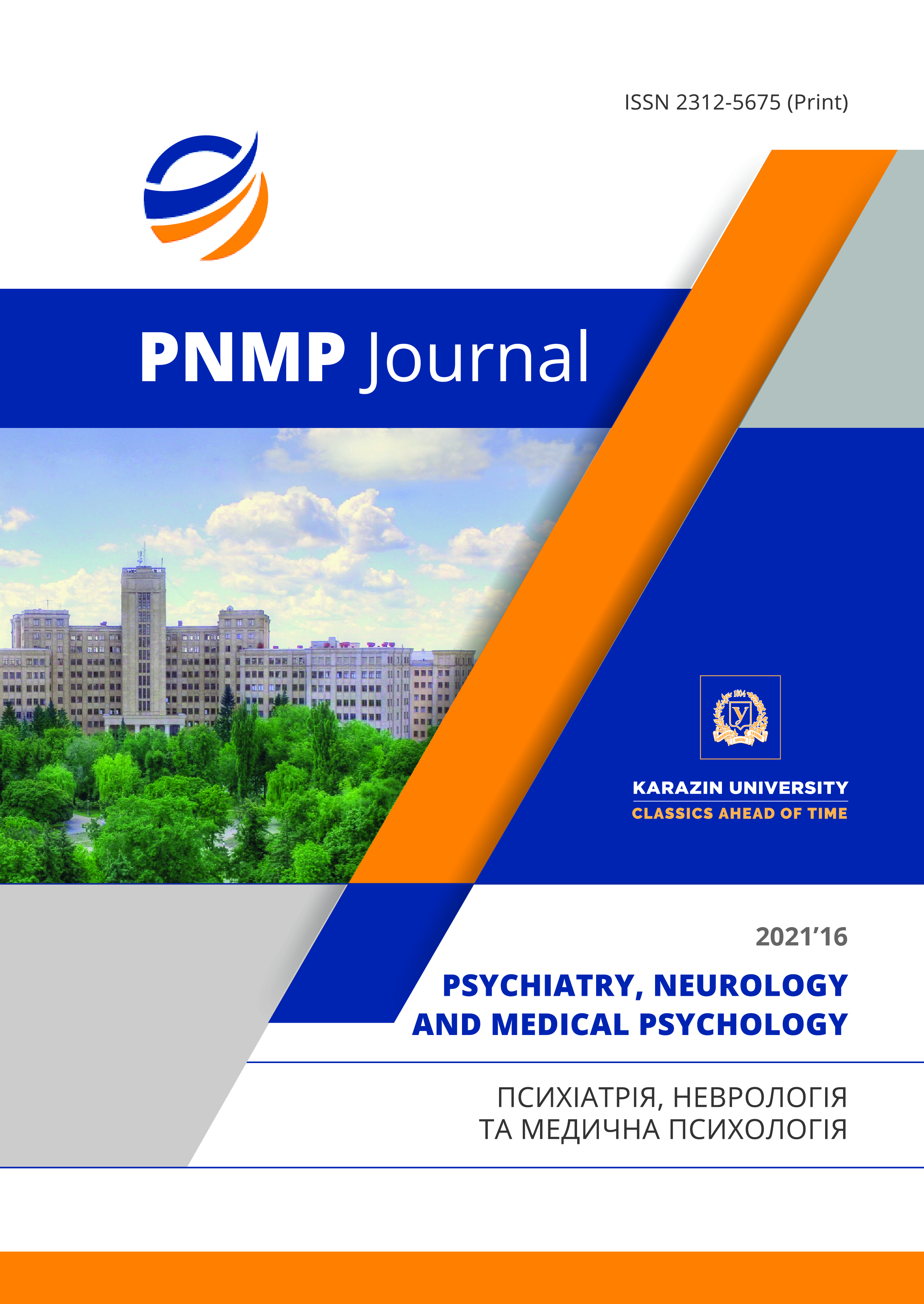Features of social and psychological adaptation in patients with depressive disorders
Abstract
The problem of depressive disorders is one of the key problems of modern psychiatry due to the high prevalence, large-scale social losses and negative medical consequences of depression, as well as severe dysfunction of patients, which determines the relevance of the study of socio-psychological adaptation in depressive disorders.
The aim of the study: to determine the features of socio-psychological adaptation in patients with depressive disorders, taking into account age and gender
Objectives of the study: to define the structure and quantitative indicators of socio-psychological adaptation and analyze its features in patients with depressive disorders in different age groups and taking into account the gender factor.
Methods: using diagnostic techniques for socio-psychological adaptation C. Rogers et R.F. Dymond clinically and psychologically examined 107 men and 138 women with depressive disorders.
Results. It was found that patients with depressive disorders are characterized by a low level of socio-psychological adaptation, while men have indicators of socio-psychological adaptation are significantly lower than women in terms of adaptability, self-acceptance, acceptance of others, emotional comfort, adaptation, self-acceptance, acceptance of others, as well as on integrated indicators of emotional comfort and internality. Indicators of maladaptation are higher in men than in women: maladaptation, self-rejection, rejection of others, emotional discomfort and external control. There is a tendency to decline the state of socio-psychological adaptation with age, which is manifested by a decrease in older age groups of adaptability, self-acceptance, emotional comfort, adaptation, self-acceptance, and integrated indicators of emotional comfort and internality, and increasing indicators of maladaptation, self-rejection, rejection, external control, payroll and escapism. The most significant violation of socio-psychological adaptation occurs in the age group of 45 years and older.
Downloads
References
Global Burden of Disease Study C Global, regional, and national incidence, prevalence, and years lived with disability for 301 acute and chronic diseases and injuries in 188 countries, 1990–2013: a systematic analysis for the Global Burden of Disease Study 2013. Lancet. 2015, no. 386, pp. 743–800. https://doi.org/10.1016/S0140-6736(15)60692-4
Malhi G.S, Mann J.J. Depression. Lancet. 2018, no. 392(10161), pp. 2299-2312. https://doi.org/10.1016/s0140-6736(18)31948-2
Murray C.J. Global, regional, and national incidence, prevalence, and years lived with disability for 354 diseases and injuries for 195 countries and territories, 1990–2017: a systematic analysis for the Global Burden of Disease Study 2017. Lancet. 2018, no. 392, pp. 1789-1858. https://doi.org/10.1016/S0140-6736(18)32279-7
Bains N., Abdijadid S. Major Depressive Disorder. In: StatPearls. Treasure Island (FL). P. StatPearls Publishing. 2020 Jan. URL: https://www.ncbi.nlm.nih.gov/books/NBK559078/
Christensen M.C., Wong C.M.J., Baune B.T. Symptoms of Major Depressive Disorder and Their Impact on Psychosocial Functioning in the Different Phases of the Disease: Do the Perspectives of Patients and Healthcare Providers Differ? Front Psychiatry. 2020, no. 11, p. 280. https://doi.org/10.3389/fpsyt.2020.00280
Isakov R.I. Psychosocial maladaptation in women with depressive disorders of different genesis: features of diagnosis, severity and structure. Psychiatry, neurology, medical psychology. 2018, no. 9, pp. 82–92. [In Ukr.] https://doi.org/10.26565/2312-5675-2018-9-12
Missula Y.I. Some features of quality of life in the primary episode of bipolar disorder. Bulletin of social hygiene and health care organization of Ukraine. 2020, no. 1(83), pp. 24-30. [In Ukr.] https://doi.org/10.11603/1681-2786.2019.4
Pshuk N.G., Stukan L.V., Kaminska A.O. Introducing system of psychotherapeutic intervention for family caregivers of patients with endogenous mental disorders. Wiadomosci Lekarskie. 2018, no. 71(5), pp. 980-985.
Kraus C., Kadriu B., Lanzenberger R., Zarate C.A., Kasper S. Prognosis and improved outcomes in major depression: a review. Transl Psychiatry. 2019, no. 9, p. 127.https://doi.org/10.1038/s41398-019-0460-3
Markova M., Rezunenko O., Kozhyna H. Contents and efficiency measures of psychoeducation in rehabilitation system of patients with bipolar affective disorder. Journal of Education, Health end Sport formerly Journal of Health Sciences. 2017, no. 7, pp. 711–715. https://dx.doi.org/10.5281/zenodo.830020
Osnitsky A.K. Determining the characteristics of social adaptation. Psychology and school. 2004, no. 1, pp. 43-56. [In Russ.]
Belov O., Pshuk N. Age and gender features of depressive and anxiety symptomatics of depressive disorders. Wiadomości Lekarskie. 2020, no. 73(7), pp. 1476-1479. https://doi.org/10.36740/WLek202007130




